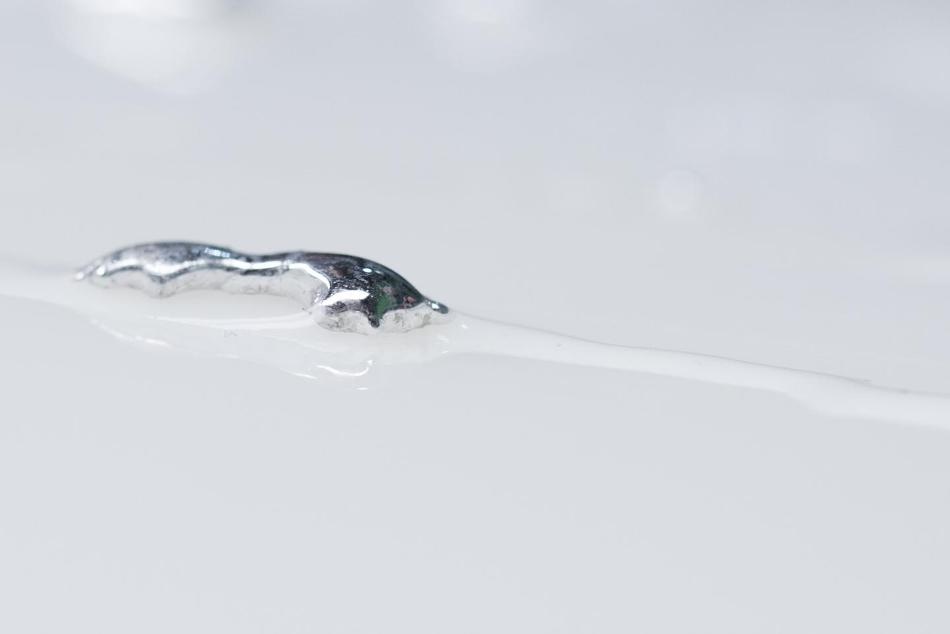Oct 20 2017
Two-dimensional materials with a thickness of just a few atoms, never observed before in nature, have been synthesized by scientists from the RMIT University in Melbourne, Australia. The scientists achieved this by using liquid metal.
 This image of a liquid metal 'slug' and its clear atom-thick 'trail' shows the breakthrough in action. When dissolved in a liquid metal core, certain metals leave behind this clear layer of their oxide, which is no thicker than a few atoms and can be peeled away by touching or rolling. (Credit: RMIT University)
This image of a liquid metal 'slug' and its clear atom-thick 'trail' shows the breakthrough in action. When dissolved in a liquid metal core, certain metals leave behind this clear layer of their oxide, which is no thicker than a few atoms and can be peeled away by touching or rolling. (Credit: RMIT University)
This remarkable advancement will transform chemistry and can be used to improve data storage and develop faster electronic devices. The “once-in-a-decade” finding has been reported in the journal 'Science'.
The team dissolved metals in liquid metal to develop extremely thin oxide layers, which did not exist as layered structures and which get easily peeled away.
Upon being extracted, the oxide layers can be applied as transistor components in state-of-the-art electronics. The speed of the electronics is governed by how thin the oxide layer is. Thinner oxide layers also indicate that the electronics require less power. Apart from other applications, oxide layers are used to produce touch screens used in smart phones.
Professor Kourosh Kalantar-zadeh and Dr Torben Daeneke from RMIT’s School of Engineering have headed the study and have been working with students for the past one and a half years to investigate the technique.
“When you write with a pencil, the graphite leaves very thin flakes called graphene, that can be easily extracted because they are naturally occurring layered structures,” stated Daeneke. “But what happens if these materials don’t exist naturally?”
“Here we found an extraordinary, yet very simple method to create atomically thin flakes of materials that don’t naturally exist as layered structures.”
We use non-toxic alloys of gallium (a metal similar to aluminium) as a reaction medium to cover the surface of the liquid metal with atomically thin oxide layers of the added metal rather than the naturally occurring gallium oxide.
Dr Torben Daeneke from RMIT’s School of Engineering
“This oxide layer can then be exfoliated by simply touching the liquid metal with a smooth surface. Larger quantities of these atomically thin layers can be produced by injecting air into the liquid metal, in a process that is similar to frothing milk when making a cappuccino.”
The technique is so inexpensive and uncomplicated that it ccould be undertaken on a kitchen stove by anyone.
“I could give these instructions to my mum, and she would be able to do this at home,” stated Daeneke.
According to Professor Kourosh Kalantar-zadeh, the outcomes of the study enable hitherto unknown thin oxide materials to be applied on a day-to-day basis, with detailed inferences for prospective technologies.
“We predict that the developed technology applies to approximately one-third of the periodic table. Many of these atomically thin oxides are semiconducting or dielectric materials.”
“Semiconducting and dielectric components are the foundation of today’s electronic and optical devices. Working with atomically thin components is expected to lead to better, more energy efficient electronics. This technological capability has never been accessible before.”
This advancement can also be used during catalysis, the fundamental process of the present-day chemical industry, transforming the way we synthesize chemical products such as fertilizers, medicines, and plastics.